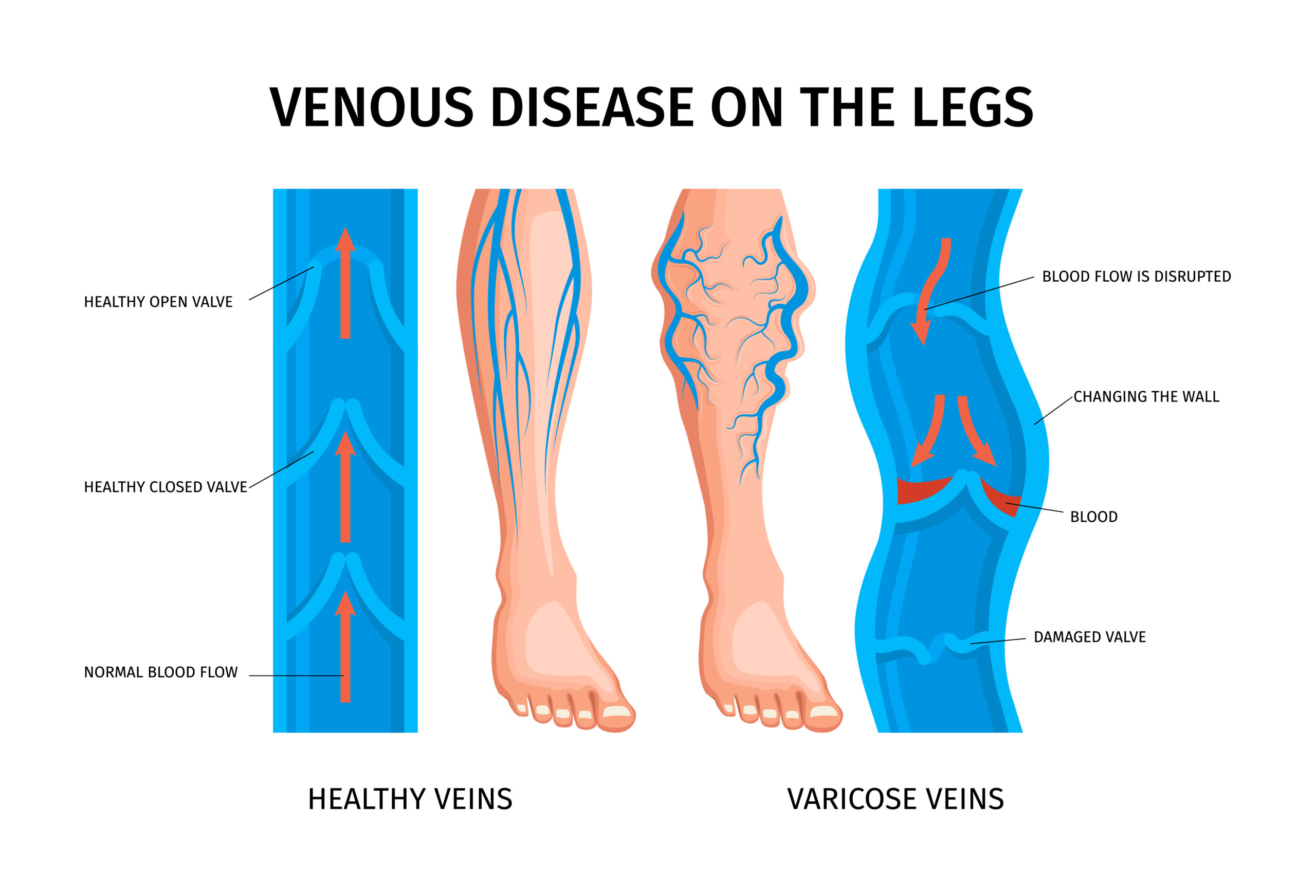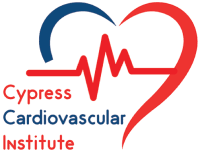Varicose Veins: Causes, Symptoms and Treatment Options
Discover varicose veins causes, symptoms, and treatments like VenaSeal and ClosureFast. Keep your veins healthy!

Cypress Cardiovascular Institute’s facility
Understanding Varicose Veins
For more information about our complete range of our vein care services, please visit our dedicated vein care center page.
Definition and Causes
Varicose veins are not just a visual nuisance; they are bulging veins that typically appear on the legs. While they may not pose a significant health threat, they can cause discomfort and pain. These bulges occur due to weak vein walls and valves that don’t close properly, allowing blood to pool and causing the veins to enlarge. They appear as lumpy, blue or purple streaks on legs, ankles, or feet. While treatments can help manage them, they tend to recur (Cleveland Clinic).
Most commonly, varicose veins develop in the lower body—calves, ankles, and feet. They can also appear in the pelvis or buttocks (where they’re known as hemorrhoids) (Cleveland Clinic).
Risk Factors
Several factors contribute to the development of varicose veins:
- Age: As we age, veins lose elasticity and valves weaken, making blood flow less efficient
- Prolonged Standing/Sitting: Extended periods in one position can stress leg veins
- Weight: Excess weight puts additional pressure on veins
- Genetics: Family history increases likelihood (Johns Hopkins Medicine)
Other significant risk factors include:
- Gender: Women are more susceptible due to hormonal changes during pregnancy, birth control use, or hormone treatments (Mayo Clinic)
- Pregnancy: Increased blood volume and fetal weight pressure on veins
- Obesity: Extra weight increases vein pressure
- Inactivity: Sedentary lifestyle reduces circulation
- Smoking: Impairs circulation and vein health
- Leg Injury: Past trauma can affect vein function
For treatment options, explore our articles on minimally invasive vein treatment, and ClosureFast.
Symptoms and Complications
Early detection of varicose veins is crucial for proper treatment and management.
Common Symptoms
Key symptoms include:
- Visible Veins: Enlarged, twisted veins appearing blue or dark purple
- Skin Changes: Discoloration or redness around affected veins
- Discomfort: Heaviness, burning, or aching in legs
- Swelling: Particularly in lower legs after prolonged standing or sitting
| Symptom | Description |
|---|---|
| Visible Veins | Large, twisted blue or purple veins |
| Skin Changes | Redness or darkening around veins |
| Discomfort | Leg heaviness, burning sensation, aching |
| Swelling | Edema in lower legs, especially after inactivity |
Sources: Johns Hopkins Medicine, Mayo Clinic
Potential Complications
While varicose veins often start as a cosmetic concern, they can lead to more serious complications:
- Ulcers: Chronic swelling can lead to leg ulcers
- Bleeding: Veins close to the skin surface may bleed if injured
- Inflammation: Phlebitis can occur in affected veins
- Chronic Venous Insufficiency: Impaired blood return leading to persistent swelling
- Blood Clots: Increased risk of clot formation
Sources: Cleveland Clinic, Mayo Clinic
Treatment Options
Self-Care Measures
Several self-care strategies can help manage varicose veins according to Stanford Healthcare:
- Compression Stockings: Promote blood flow and reduce swelling
- Leg Elevation: Raise legs above heart level periodically
- Exercise: Regular physical activity improves circulation
- Diet: High-fiber, low-salt diet helps prevent swelling
Medical Procedures
Modern treatment options include:
- Sclerotherapy: Injectable solution closes off smaller veins
- Thermal Ablation: Uses heat to seal veins
- Microphlebectomy: Removes small veins through tiny incisions
- Vein Stripping: Surgical removal of larger varicose veins
- Endovenous Laser Treatment (EVLT): Uses laser energy guided by ultrasound
| Procedure | Description |
|---|---|
| Sclerotherapy | Chemical solution to close veins |
| Thermal Ablation | Heat-based vein sealing |
| Microphlebectomy | Small vein removal through minimal incisions |
| Vein Stripping | Surgical extraction of large veins |
| EVLT | Ultrasound-guided laser treatment |
For advanced treatment options, learn more about VenaSeal and ClosureFast.
Prevention Methods
Lifestyle Changes
Preventive measures can help maintain vein health:
- Regular exercise
- Weight management
- Avoiding prolonged sitting/standing
- Leg elevation
- Wearing compression stockings
Maintaining Vein Health
Long-term vein health strategies include:
| Strategy | Benefit |
|---|---|
| Proper Diet | High-fiber, low-salt foods reduce swelling (Mayo Clinic) |
| Hydration | Promotes healthy blood flow |
| Leg Exercises | Improves circulation and muscle tone |
| Comfortable Clothing | Allows proper blood circulation |
| Regular Check-ups | Enables early detection and treatment |
For more information about treatment options, visit our pages on VenaSeal vs ClosureFast and minimally invasive vein treatments.
